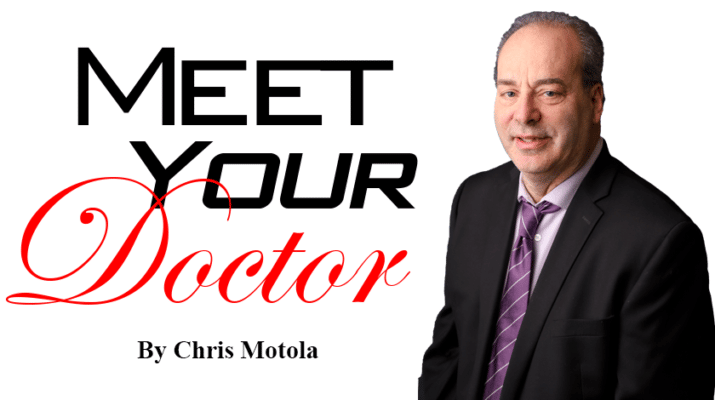By Chris Motola
Hospice chief in Niagara Falls explains end of life care
Q: You are the medical director at Niagara Hospice?
A: Yes, of Niagara Hospice, Palliative Care and Kalos Health, which is an insurance company. It’s an umbrella of four companies. We also have Liberty, which is a transportation company, but I’m the medical director of the first three I mentioned.
Q: How do you coordinate across those groups?
A: A lot of meetings. With boots on the ground for the nurses, I take all of the home care calls and all the admission calls. I’m the gatekeeper. We have seven providers that work in the acute units on the residential sides. One of the nurse practitioners goes to the homes to do what we call “face-to-face” for recertifications every 60 days. But I coordinate all the doctor activity and home care calls. If they choose us as their primary or they can’t get a primary, it goes through myself. And I handle all the admissions.
Q: What does hospice look like post-COVID-19?
A: Great question. Pretty much the same. We’ve tried to keep the same process after as before. The only real difference is we added, during COVID-19, four isolation rooms, which no other hospice in the country had at the time; maybe three have followed us since. We have a 10-bed acute unit and four of them are isolation for COVID-19, RSV [respiratory syncytial virus] or TB [tuberculosis]. Anything respiratory that might require isolation.
Q: What’s RSV?
A: It’s the syncytial virus that out there now infecting kids. We actually had an adult who had it. So we have the isolation rooms, the acute beds we had already and we’re adding six more residential. But we didn’t change our processes much beyond that. We try to be very liberal when it comes to visitations, especially for patients who are end-stage or dying. Maybe the biggest thing was we used to have family gatherings at the hospice where we would feed them and let them sleep over; that’s more restricted than it was. We have two family rooms. We’ve tried basically to keep things normal. We want you to be comfortable and live better while you still have time on the planet. We don’t want to be the grim reaper. We want you to come in, be comfortable and have the remaining time you have be as normal and comfortable as possible. We even try to make our rooms look less like hospital rooms. We hide the equipment in the walls. It’s a beautiful campus. We have a functional pavilion. We have our own ambulance service. Everything is pretty much as close to normal as we can be.
Q: This might be an odd question, but what happens if a patient comes off hospice alive? Does it happen every so often?
A: Yes. Either you’ve done some reading or you know your stuff. National average is 6.6% to be exact. We know all our numbers because we have students coming through here from UB Med. Our number is 2.6%, so occasionally someone might have second thoughts about or, even rarer, they’re not declining anymore. We can’t keep them past six months. There’s is a six-month window for Medicare and 12 months for Medicaid. If you’re over that time and you’re not declining, we’ll ask them to opt out of hospice. Hospice is a carved-out benefit in Medicare, so it’s already paid for. You elect to have hospice services.
Q: If you did come off hospice after having used most of your months, would you eventually become eligible again?
A: Yes, if you were deteriorating two months down the road again, we wouldn’t say no. We always tell them if something changes to get back in contact with us. And this can be due to other issues like changing zip code. Each county is only allowed one hospice. Now there are other services that offer end-of-life services that call themselves things like “comfort care,” but they aren’t hospice. We’re the specialists.
Q: Is the county limitation on hospice a state or federal thing?
A: State. At the federal level it’s a free-for-all. In Florida and Texas you can have multiple in the same city; they’re advertising and competing. Here it goes by county. The rule of thumb is about 10% saturation in terms of beds. We’re close to that at around 200 patients. Erie County is about 2,000, but they have a very good palliative care program.
Q: How big is your palliative care program?
A: We have a whole palliative care program. We have a nurse, a social worker and nurse practitioner dedicated to it. It’s a small program. We don’t really advertise it. About 100 patients. We have a very high conversion rate of palliative care into hospice, which is good because it makes for an easy transition if you become eligible for hospice care. So the trajectory of care allows us to serve patients with chronic illness all the way through.
Q: What are the key differences between palliative and hospice care?
A: The main difference is that palliative care allows treatment. You can seek whatever treatment for whatever chronic disease you have. If you get to the hospital, we’ll check in with them. We have remote monitoring equipment we can give them. We can help them navigate treatment somewhat. We don’t do that, per se, for hospice patients.
Name: Richard Castaldo, MD
Position: Medical Director of Niagara Hospice
Hometown: Bronx
Education: University at Buffalo Medical School
Affiliations: Niagara Falls Memorial Hospital
Organizations: Niagara County Medical Society
Family: Wife; five children
Hobbies: Race horses

